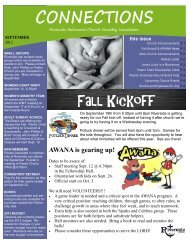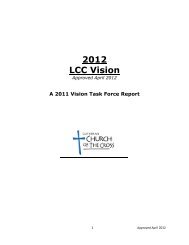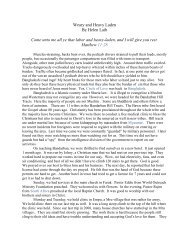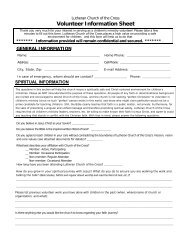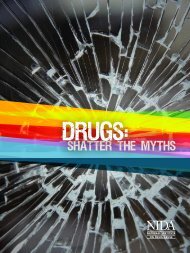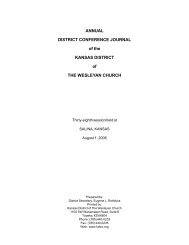Substance Use and Abuse in Durham County - Stablerack
Substance Use and Abuse in Durham County - Stablerack
Substance Use and Abuse in Durham County - Stablerack
You also want an ePaper? Increase the reach of your titles
YUMPU automatically turns print PDFs into web optimized ePapers that Google loves.
Track<strong>in</strong>g the Problem<br />
Health-related Outcomes<br />
Emergency Department Visits<br />
Indicators:<br />
<br />
<br />
Number of emergency department visits related to substance use<br />
Rate of emergency department visits per 10,000 <strong>in</strong>dividuals<br />
Relevance: Emergency department visits are a good <strong>in</strong>dicator of health crises that are caused by<br />
substance abuse. Most people will try to avoid go<strong>in</strong>g to the emergency department for drugrelated<br />
issues because of the illegality of the substance use or because of the cost of the service.<br />
Thus, typically only severe cases are seen. A sharp change <strong>in</strong> emergency department visits can<br />
<strong>in</strong>dicate that a new substance has been <strong>in</strong>troduced <strong>in</strong>to a community (<strong>and</strong> thus many people are<br />
try<strong>in</strong>g it) or the purity of a substance has changed (<strong>and</strong> experienced users are tak<strong>in</strong>g potentially<br />
life threaten<strong>in</strong>g doses of the substance).<br />
Data: The data come from the NC Disease Event Track<strong>in</strong>g <strong>and</strong> Epidemiologic Collection Tool (NC<br />
DETECT) (10). This tool is designed to provide timely statewide detection of public health events.<br />
Hospitals report <strong>in</strong>formation daily to the system to allow for early detection of potential epidemics<br />
or public health concerns.<br />
NC DETECT provided the Center <strong>and</strong> Family policy with data for 2010 to 2012, by age (under 18,<br />
over 18 <strong>and</strong> total) for <strong>Durham</strong> <strong>County</strong> residents. Data that were provided for the 2010 substance<br />
abuse report is not comparable to data that were provided this year, as the ICD9 codes used to<br />
def<strong>in</strong>e substance abuse has changed. The codes used <strong>in</strong> this report are ‘291’-‘292.99’, ‘303’-<br />
‘305.03’, <strong>and</strong> ’V79.1’.<br />
Disclaimer: “The NC DETECT Data Oversight Committee does not take responsibility for the<br />
scientific validity or accuracy of methodology, results, statistical analyses, or conclusions<br />
presented.” The NC DETECT Data Oversight Committee (DOC) <strong>in</strong>cludes representatives from<br />
NCDPH, UNC NC DETECT Team <strong>and</strong> NC Hospital Association.<br />
F<strong>in</strong>d<strong>in</strong>gs:<br />
Table 1 provides the number of admissions by age that is available for 2010 to 2012. There was<br />
approximately 12.5 percent more hospital admissions related to substance use <strong>in</strong> 2012 relative to<br />
2010. For adults, there was an <strong>in</strong>crease of 11.6% <strong>in</strong> the number of admissions between 2010 <strong>and</strong><br />
2012. Dur<strong>in</strong>g this same time period, the number of admissions for juveniles <strong>in</strong>creased 64.7%.<br />
<strong>Substance</strong> <strong>Use</strong> <strong>and</strong> <strong>Abuse</strong> <strong>in</strong> <strong>Durham</strong> <strong>County</strong> 14







